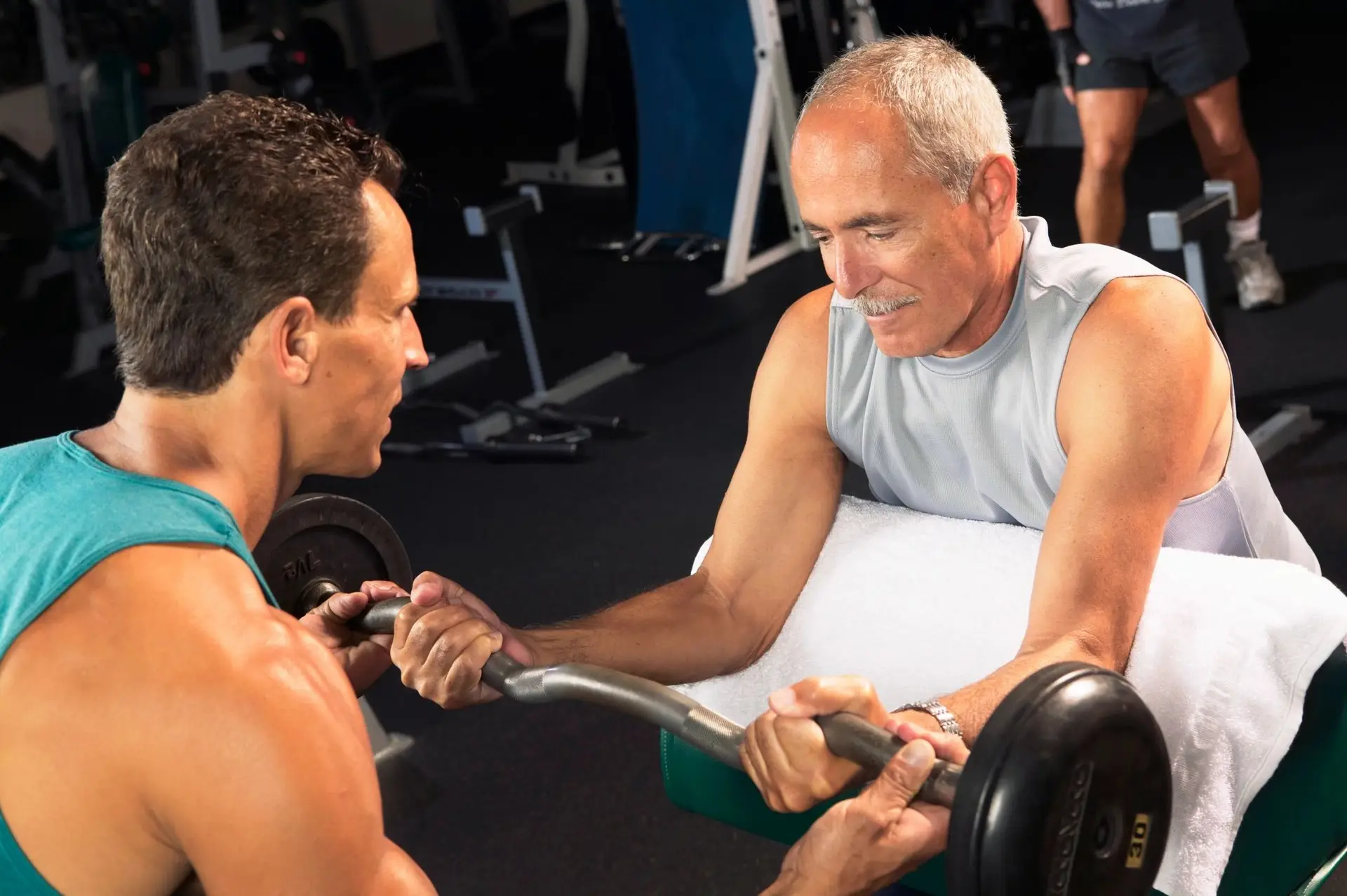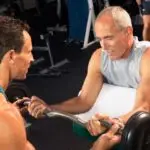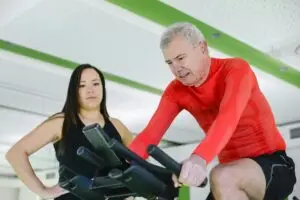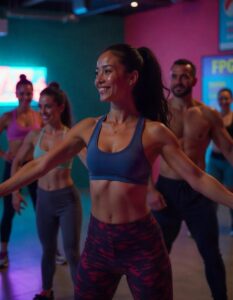
As we watch the Olympic Games or professional sports, one thing becomes strikingly apparent: the relative absence of athletes over 50, or even 40. This observation isn’t mere coincidence but reflects a fundamental biological reality about how our bodies respond to exercise as we age. However, this doesn’t mean we should stop exercising – quite the opposite. Understanding the science behind age-related muscle changes can help us appreciate why staying active becomes increasingly crucial as we get older to maintain muscle after 50
The Biology of Muscle Building
Before diving into age-related changes, it’s essential to understand how muscles grow in the first place. When we engage in strength training – whether through weightlifting, resistance bands, or bodyweight exercises – we’re actually triggering a complex series of biological processes within our muscles.
Every time we contract our muscles, especially during challenging exercises like weightlifting, we initiate chemical changes within our muscle cells. Our muscles have specialized receptors that detect movement and force generation, activating specific cellular pathways. These pathways stimulate the production of proteins that integrate into muscle fibers, leading to increased muscle size and strength – a process known as hypertrophy.
The process doesn’t stop there. Exercise also activates specific genes responsible for producing proteins crucial for muscle contraction. This genetic activation continues for several hours after each workout session, contributing to long-term muscle development and strength gains.
The Age Factor: What Changes After 50?
Recent research has revealed fascinating insights into how our bodies’ response to exercise changes as we age. The key finding? While the basic biological machinery remains the same, the effectiveness of these processes begins to decline around age 50.
Scientists have discovered that older muscles send weaker growth signals in response to exercise compared to younger muscles. In a groundbreaking study, researchers found that younger men showed changes in the expression of over 150 genes following resistance exercise, while older men showed changes in only 42 genes. This reduced genetic response helps explain why older adults typically see slower and less dramatic results from their workout efforts.
Why These Changes Matter
This age-related decline in muscle-building efficiency has several implications:
- It explains why building and maintaining muscle after 50 becomes more challenging.
- It helps us understand why recovery might take longer
- It highlights the importance of consistent exercise to maintain muscle mass
- It emphasizes the need for potentially modified but ongoing strength training programs
The Critical Importance of Continuing Exercise
Despite these biological changes, the research delivers a clear message: exercise remains one of the most vital activities for older adults. While the body’s response to training may diminish with age, the benefits are far from negligible. Studies have shown that older adults who participate in regular aerobic and resistance exercise programs can reduce their risk of becoming disabled by approximately 20% – even those who are already physically frail.
The benefits extend beyond just muscle strength:
- Improved physical function
- Enhanced mobility
- Better overall health outcomes
- Reduced risk of disability
- Maintained independence
Practical Implications for Aging Adults
Understanding these biological changes should inform how we approach exercise as we age, but it shouldn’t discourage us. Instead, this knowledge should motivate us to enhance muscle mas after 50:
- Start strength training early and maintain it throughout life
- Adjust expectations while maintaining commitment
- Focus on consistency rather than intensity
- Pay attention to proper form and technique
- Allow adequate recovery time between workouts
- Combine strength training with other forms of exercise
- Maintain a balanced, protein-rich diet to support muscle maintenance
Looking Ahead: The Future of Longevity
While we can’t stop the biological clock, understanding how our bodies change with age allows us to adapt our fitness approaches accordingly. The goal isn’t to compete with Olympic athletes or our younger selves but to maintain functionality and independence throughout our lives.
The research continues to demonstrate that exercise remains one of the most powerful tools we have for healthy aging. Even if our muscles don’t respond as dramatically as they once did, the benefits of regular physical activity – particularly strength training – become more crucial, not less, as we age.
As we embrace longer lifespans, maintaining physical capability becomes increasingly important. The message is clear: while our bodies may change with age, the fundamental importance of exercise remains constant. By understanding and adapting to these changes, we can continue to reap the benefits of physical activity well into our later years, ensuring not just longevity, but quality of life throughout our extended years.
Remember, it’s never too late to start exercising, and it’s always too early to stop. The key to longevity isn’t just about adding years to life – it’s about adding life to those years through maintained strength, mobility, and independence.
Protein Power: Why Older Adults Need More Protein for Weight Loss and Longevity








